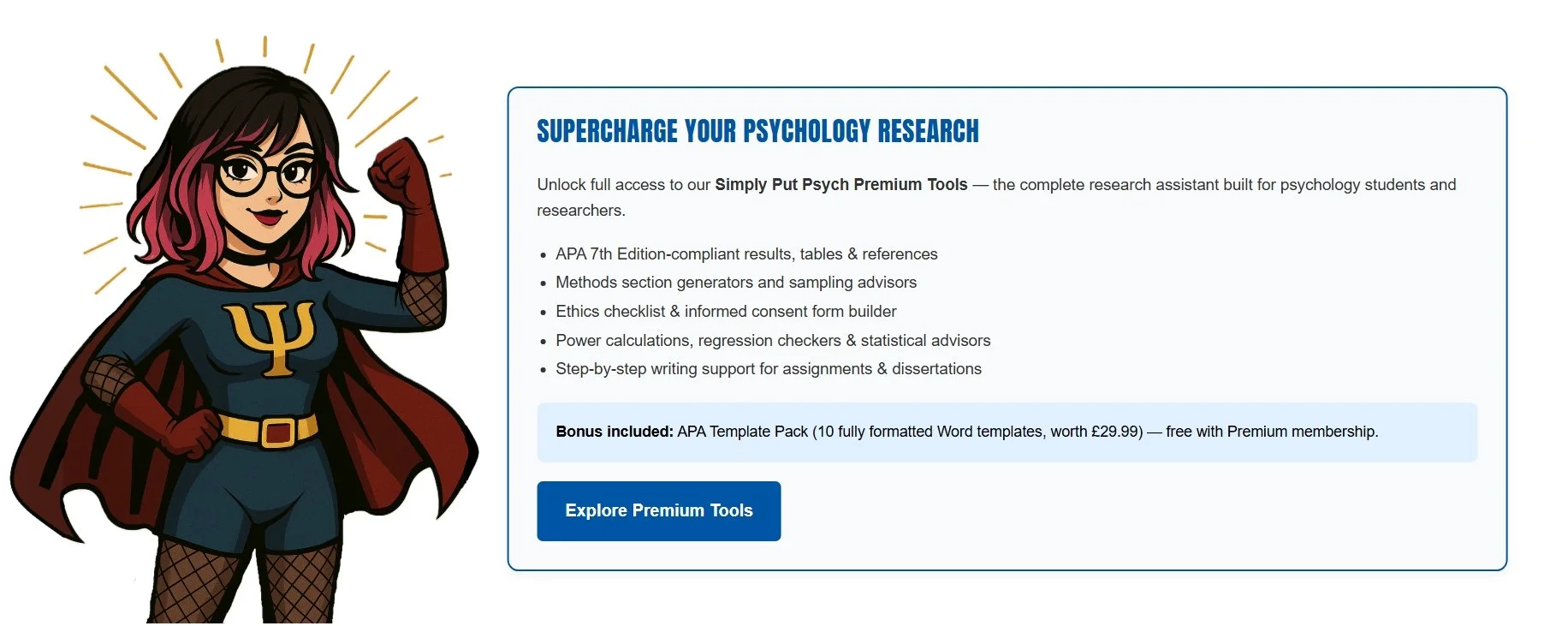Thematic Analysis of “Pulsar Star” by Anya Nami: Cosmic Imagery and Emotional Despair
In the vast universe of modern music, few songs manage to capture the emotional complexities of the human experience as powerfully as Anya Nami’s “Pulsar Star.” Blending poetic vulnerability with astrophysical metaphor, the song takes the listener on a journey through heartbreak, self-doubt, emotional collapse, and a yearning for love. While its surface tells the story of someone reeling from unrequited affection, a closer reading reveals a more intricate emotional architecture. Using thematic analysis, we can begin to unpack how “Pulsar Star” explores the inner turbulence of a soul that burns too brightly, feels too deeply, and struggles to remain intact. As with any interpretation this is purely based on our research and may not reflect the artist original vision.
Lyrics to Pulsar Star by Anya Nami
[Verse]
[Pre-Chorus]
[Chorus]
[Outro]
Loneliness at a Cosmic Scale
The song opens with the line, “Silent gloom / I walk into my empty room,” immediately setting a tone of emotional vacancy and isolation. Yet this is no ordinary solitude. Through the metaphor of the “pulsar star” (a highly magnetized, rotating neutron star emitting beams of radiation) Anya Nami frames her narrator’s internal world in astronomical terms. Loneliness is not just present; it is cosmic in scale. The speaker doesn’t just feel alone, she exists like a dying star in the vast emptiness of space—radiating pain, collapsing inward, barely holding on.
This theme of cosmic isolation recurs throughout the song. The scent of perfume left behind by someone “never mine” highlights the aching distance between the speaker and those she longs for. Unlike typical heartbreak songs, which focus on relational drama or closure, “Pulsar Star” internalizes the experience, turning attention toward the existential weight of feeling fundamentally disconnected from others.
The Burden of Self-Blame
One of the most emotionally cutting moments of the song arrives in the pre-chorus: “Of course it’s me / My fault neglecting what I need.” Here, the speaker does not merely suffer from rejection; she internalizes it. This theme of self-blame is significant, particularly in the context of emotional neglect. Instead of attributing the failure of connection to external circumstances or the actions of others, the speaker collapses inward, identifying herself as the source of her own pain.
This internalization reflects a broader psychological pattern common to those who have experienced chronic emotional invalidation: they come to believe that their needs are burdensome or unreasonable. The lyric is not just self-critical—it’s tragically revealing. The speaker believes that by failing to meet her own emotional needs, she has somehow deserved the pain she now endures.
Emotional Collapse and Disintegration
As the song unfolds, the imagery becomes increasingly unstable, mirroring the speaker’s deteriorating emotional state. “Piece by piece / I fall apart,” she confesses. Later, she admits, “My mass is too hard to master.” These lines do more than describe sadness, they capture a sense of emotional disintegration. The speaker is not just breaking down emotionally; she is losing control of herself as if governed by forces beyond her control, like gravity collapsing a star.
This theme of unravelling resonates with listeners who have experienced depressive episodes or identity confusion. The language of mass and motion is not accidental; it situates the speaker as something simultaneously powerful and unstable, collapsing under her own emotional weight.
The Cycle of Being Used
Woven into the song’s emotional core is a recurring theme of exploitation. In the chorus, the speaker states bluntly: “Guess I am way too used / To being greedily used.” It’s a devastating admission that suggests a pattern of emotional objectification. Her needs are not met with care, but consumed by others for their benefit. This lyric resonates as both a personal revelation and a cultural commentary; particularly relevant in a society where emotional labour often goes unacknowledged, especially among women and marginalized individuals.
The tone here is not just bitter, it’s exhausted. The speaker recognizes the cycle but feels powerless to change it, contributing further to her sense of disempowerment and emotional fatigue.
A Plea for Rescue
And yet, amidst the grief, self-doubt, and despair, there remains one fragile, vital theme: the longing for connection and rescue. “Hold me, hug me, or I’ll fall,” she pleads. It’s the most human line in the song, stripped of metaphor, free of pretense. Beneath the black holes and celestial collapse lies a singular truth: the desire to be loved, seen, and saved.
This final plea reframes the cosmic chaos not as nihilistic, but as survivable. The speaker’s dream “to shine” remains, even if she fears that doing so may destroy everything around her. Like the pulsar, she continues to emit light—even when everything else falls away.
Simply Put: Mapping the Emotional Cosmos
Anya Nami’s “Pulsar Star” is more than an expression of heartbreak; it is a meditation on what it feels like to carry emotional gravity too heavy to hold. By casting personal turmoil in the language of cosmic phenomena, the song offers a compelling metaphor for the hidden violence of emotional neglect, exploitation, and self-blame. The speaker is not just a victim of loss; she becomes a celestial body: dangerous, radiant, and alone.
Through thematic analysis, we see how the song transforms emotional pain into an expansive, metaphor-rich narrative that invites both empathy and introspection. It is a work that reminds us of the unseen emotional universes people carry within them and how, sometimes, the loudest cries are the ones that echo through space in silence.
How We Conducted This Analysis (data corpus)
Thematic analysis is a flexible and accessible method for identifying, analysing, and interpreting patterns of meaning within qualitative data. Originally formalized by Braun and Clarke (2006), thematic analysis has been widely used in psychology, literature, media, and cultural studies. In this essay, thematic analysis will be applied to the song “Pulsar Star” by Anya Nami—a haunting lyrical composition that weaves themes of emotional suffering, loneliness, and existential disintegration into a cosmic metaphor. Through careful textual examination, this analysis aims to uncover the underlying themes embedded in the lyrics, providing insight into the psychological and emotional experiences expressed by the speaker. The metaphorical use of celestial phenomena such as black holes, quasars, and pulsars functions not only as poetic devices but as reflections of the speaker’s inner world. The analysis proceeds by following Braun and Clarke’s six-phase framework: familiarization, coding, theme development, review, definition, and reporting.
Familiarization with the Data
The first step in thematic analysis involves immersing oneself in the data—reading and re-reading the material to gain a deep understanding of its content and tone. “Pulsar Star” unfolds as a deeply introspective and emotionally charged song that blends the personal with the astronomical. At first glance, the lyrics present a narrative of unrequited love, emotional neglect, and inner turmoil. However, the speaker does not express these emotions in conventional or literal terms. Instead, cosmic imagery and astronomical metaphors are employed throughout the song to dramatize the scale and intensity of the speaker’s emotional state. Words such as “black hole,” “pulsar,” “quasar,” and “mass” are not merely ornamental—they are essential to understanding the speaker’s experience of emotional gravity and collapse.
The song begins with stark isolation—“Silent gloom / I walk into my empty room”—and quickly introduces the pain of unfulfilled desire: the lingering scent of someone “never mine.” This sense of rejection and distance permeates the lyrics, deepening into emotional fragmentation as the speaker “fall[s] apart” and turns to divine intervention in vain. In the chorus, the tone escalates to depict emotional devastation through the metaphor of breaking—“Hearts of stone / They shatter too”—while the body and soul become casualties of repeated exploitation: “Guess I am way too used / To being greedily used.”
The closing lines, referring to a “sublime quasar” and the “fate / Of pulsar star of mine,” offer a glimpse into the speaker’s psychological self-conception: an entity both luminous and destructive, whose desire to shine comes at the cost of consuming everything near it. Through this cosmic metaphor, the speaker positions themselves as fundamentally incompatible with human connection, resigned to a fate of emotional isolation.
This initial familiarization reveals a multi-layered text: emotionally raw, symbolically rich, and thematically dark. It sets the stage for a deeper thematic analysis, beginning with the generation of initial codes.
Initial Coding
In the second phase of Braun and Clarke’s (2006) thematic analysis process, the data is systematically examined for interesting features, known as codes. These are not yet full themes, but rather building blocks—recurring words, phrases, or ideas that hint at deeper patterns of meaning. In the case of “Pulsar Star”, the lyrics are rich with emotionally charged language and metaphorical expressions that reflect the speaker’s inner world.
One prominent code is isolation, introduced immediately in the line “Silent gloom / I walk into my empty room.” These phrases evoke a physical and emotional emptiness, underscoring the speaker’s solitude. The emptiness of the room serves as a metaphor for internal desolation, suggesting a life devoid of companionship or meaningful connection.
Another recurring code is unrequited desire. The lyric “I smell the trace of nice perfume / Of someone pretty fine, someone never mine” captures longing for someone unattainable. The sensory detail of “perfume” indicates that the memory of this person lingers, even in their absence, while “never mine” confirms the one-sided nature of the affection.
There are also strong indicators of emotional collapse, seen in “Piece by piece / I fall apart.” This phrase suggests not a sudden breakdown, but a gradual unraveling—a slow, painful deterioration of the self. Similarly, “My fault neglecting what I need” indicates self-blame, as the speaker holds themselves responsible for their suffering.
Throughout the song, cosmic and astronomical metaphors serve as codes that point to emotional extremes. Lines such as “Spinning 'round and 'round and faster,” “My mass is too hard to master,” and “Turn into a merciless black hole” evoke sensations of psychological instability, emotional density, and inner chaos. These codes do not merely decorate the narrative; they are the narrative—transforming personal despair into something vast and inescapable.
Another key code is emotional exploitation, especially in the repeated chorus line: “Guess I am way too used / To being greedily used.” The phrasing implies a pattern of mistreatment, where the speaker’s emotional or physical availability has been taken for granted by others.
Finally, longing for care and containment emerges in lines like “Hold me, hug me, or I’ll fall.” Despite the speaker’s recognition of their destructive potential, there remains a desperate plea for affection and grounding—an emotional anchor in a world where they feel otherwise adrift.
Together, these initial codes—isolation, unrequited desire, emotional collapse, self-blame, cosmic metaphor, emotional exploitation, and craving connection—form the foundation for the development of broader, interconnected themes in the next phase of analysis.
Searching for Themes
In this third phase of thematic analysis, the initial codes are grouped and interpreted to uncover broader patterns of meaning—referred to as themes. These themes are not just collections of similar ideas but represent significant concepts that capture the emotional and narrative essence of the lyrics.
The first emerging theme is Emotional Abandonment and Loneliness. This theme stems from multiple codes including "empty room," "someone never mine," and "silent gloom." The speaker describes a deep sense of isolation, both physical and emotional. The absence of connection is not just felt—it dominates the speaker’s internal world, coloring every thought and memory.
Another strong theme is Self-Blame and Internalized Rejection. The line "Of course it's me / My fault neglecting what I need" reflects an internal narrative where the speaker sees themselves as the cause of their emotional suffering. Rather than blaming external forces or others, the speaker turns inward, identifying their unmet needs as a personal failure. This self-directed blame contributes to a cyclical pattern of emotional pain.
A third theme that emerges is Destruction Through Cosmic Metaphor. References to black holes, pulsars, quasars, and mass are not random; they reflect the speaker’s emotional state and perceived impact on others. For example, the line "Turn into a merciless black hole" suggests a fear of becoming emotionally void or harmful. "My mass is too hard to master" conveys the overwhelming intensity of these feelings. These metaphors create a sense of emotional gravity, portraying the speaker as someone who feels both powerful and dangerously unstable.
The next theme is Emotional Exploitation and Objectification. The phrase "being greedily used" reveals the speaker’s sense of having been taken advantage of, likely in a repeated pattern. There is a clear suggestion that their emotions, body, or presence has been consumed by others without care or reciprocity.
Finally, a more subtle yet important theme is Craving for Human Connection. Despite the speaker’s fear of destruction and feelings of abandonment, there is still a longing for closeness. This is most clearly expressed in the plea, "Hold me, hug me, or I’ll fall." Even in the midst of chaos, the speaker seeks comfort, stability, and warmth.
These themes begin to reveal the emotional architecture of the song. They show how personal suffering, cosmic metaphor, and the human need for connection all coexist within the same emotional landscape. The next phase will involve reviewing and refining these themes to ensure they accurately reflect the depth and complexity of the lyrics.In this third phase of thematic analysis, the initial codes are grouped and interpreted to uncover broader patterns of meaning—referred to as themes. These themes are not just collections of similar ideas but represent significant concepts that capture the emotional and narrative essence of the lyrics.
The first emerging theme is Emotional Abandonment and Loneliness. This theme stems from multiple codes including "empty room," "someone never mine," and "silent gloom." The speaker describes a deep sense of isolation, both physical and emotional. The absence of connection is not just felt—it dominates the speaker’s internal world, coloring every thought and memory.
Another strong theme is Self-Blame and Internalized Rejection. The line "Of course it's me / My fault neglecting what I need" reflects an internal narrative where the speaker sees themselves as the cause of their emotional suffering. Rather than blaming external forces or others, the speaker turns inward, identifying their unmet needs as a personal failure. This self-directed blame contributes to a cyclical pattern of emotional pain.
A third theme that emerges is Destruction Through Cosmic Metaphor. References to black holes, pulsars, quasars, and mass are not random; they reflect the speaker’s emotional state and perceived impact on others. For example, the line "Turn into a merciless black hole" suggests a fear of becoming emotionally void or harmful. "My mass is too hard to master" conveys the overwhelming intensity of these feelings. These metaphors create a sense of emotional gravity, portraying the speaker as someone who feels both powerful and dangerously unstable.
The next theme is Emotional Exploitation and Objectification. The phrase "being greedily used" reveals the speaker’s sense of having been taken advantage of, likely in a repeated pattern. There is a clear suggestion that their emotions, body, or presence has been consumed by others without care or reciprocity.
Finally, a more subtle yet important theme is Craving for Human Connection. Despite the speaker’s fear of destruction and feelings of abandonment, there is still a longing for closeness. This is most clearly expressed in the plea, "Hold me, hug me, or I’ll fall." Even in the midst of chaos, the speaker seeks comfort, stability, and warmth.
These themes begin to reveal the emotional architecture of the song. They show how personal suffering, cosmic metaphor, and the human need for connection all coexist within the same emotional landscape. The next phase will involve reviewing and refining these themes to ensure they accurately reflect the depth and complexity of the lyrics.
Reviewing Themes
In this fourth phase of thematic analysis, the initially identified themes are re-examined and refined. This involves checking whether the themes work in relation to both the coded data and the entire data set (the full song lyrics). The goal is to ensure that the themes are coherent, distinct, and meaningfully connected to the text.
The theme of Emotional Abandonment and Loneliness remains central and well-supported. It is established clearly in the opening verse and continues to resonate throughout the song. Phrases like "empty room" and "I fall apart" portray a sense of isolation that goes beyond physical solitude, indicating a deeper emotional disconnection. This theme is reinforced by the absence of reciprocated affection, as shown in "someone never mine." It captures the pain of being emotionally overlooked or excluded.
The second theme, Self-Blame and Internalized Rejection, also holds strong. The pre-chorus is key to this theme, particularly the lines "Of course it's me / My fault neglecting what I need." These lyrics reflect an internal narrative of guilt and personal responsibility for unmet emotional needs. This theme works closely with the first, showing how loneliness is not just felt but also justified and internalized by the speaker. The theme is consistent throughout the song, without conflicting interpretations.
Destruction Through Cosmic Metaphor also remains a powerful and cohesive theme. The metaphors of "black hole," "pulsar star," and "mass too hard to master" all point toward a self-image that is both unstable and dangerous. These astronomical references consistently mirror the speaker’s emotional intensity and volatility. Rather than distracting from the emotional core of the lyrics, the cosmic language enhances it, offering a vivid and symbolic framework for understanding psychological turmoil.
The theme of Emotional Exploitation and Objectification is supported by repeated language about being “used” and “greedily” consumed. It connects well with the previous themes by showing how the speaker’s emotional vulnerability may have led to repeated mistreatment. The pattern of exploitation adds another layer to the speaker’s internal struggle, contributing to feelings of worthlessness and emotional fatigue.
Finally, Craving for Human Connection remains a subtle but important theme. It contrasts with the darker themes by expressing a desperate hope for intimacy and support. This is especially visible in the line “Hold me, hug me, or I’ll fall,” which captures a moment of emotional rawness and the need for rescue. The theme is relatively brief in its appearance, but its emotional weight gives it lasting importance.
Overall, all five themes are distinct but interconnected. They complement each other, forming a complex emotional landscape that moves from abandonment to destruction to yearning. At this stage, the themes can be clearly defined and named in preparation for the next phase of the analysis.
Defining and Naming Themes
In this fifth phase of thematic analysis, the focus shifts to refining and clearly articulating each theme. The goal is to define what each theme captures about the data, what it excludes, and how it contributes to the overall narrative. This process ensures that the themes are distinct, meaningful, and grounded in the text.
1. Cosmic Isolation
This theme captures the overwhelming sense of loneliness that defines the speaker’s emotional reality. The use of spatial and cosmic imagery—“empty room,” “pulsar star,” “black hole”—reflects not only emotional emptiness but a sense of being fundamentally detached from others. The speaker is portrayed as a celestial body, orbiting far from human connection, distant and unreachable. This theme highlights how the speaker experiences loneliness as something vast and all-consuming.
2. Internalized Blame
This theme addresses the speaker’s tendency to turn emotional pain inward. Rather than blaming others for their abandonment or suffering, the speaker takes personal responsibility, as seen in the lyric “My fault neglecting what I need.” This internalization of blame suggests a pattern of self-doubt and emotional self-neglect. The theme emphasizes how the speaker’s pain is compounded by guilt and self-criticism, reinforcing their feelings of unworthiness.
3. Emotional Disintegration
This theme explores the gradual breakdown of the speaker’s sense of self. Phrases like “I fall apart,” “piece by piece,” and “my mass is too hard to master” express a loss of emotional control and identity. The metaphor of spinning or collapsing, drawn from the behavior of stars and black holes, illustrates how the speaker feels increasingly fragmented. This theme captures the psychological toll of prolonged emotional neglect and instability.
4. Exploitation and Emotional Exhaustion
This theme focuses on the repeated emotional exploitation the speaker has endured. The phrase “being greedily used” suggests that others have consumed the speaker’s emotional energy without care or reciprocity. It highlights a sense of being valued only for what one can give, rather than who one is. The cumulative result is emotional fatigue, disillusionment, and bitterness. This theme is central to understanding the speaker’s jaded view of relationships.
5. Longing for Connection and Rescue
Despite the emotional devastation described throughout the song, this theme reveals a persistent desire to be cared for. The plea, “Hold me, hug me, or I’ll fall,” is a raw expression of vulnerability. It contrasts with the destructive imagery used elsewhere, offering a brief glimpse into the speaker’s hope for salvation through intimacy. This theme adds emotional depth, reminding the listener that beneath the pain, there remains a human need for love and acceptance.
Each theme contributes to a broader narrative of emotional suffering and survival. Together, they show how the speaker navigates a complex emotional terrain using poetic and cosmic imagery to express experiences that might otherwise be unspeakable. These refined themes now form the basis for the final phase of analysis: the written report that synthesizes the findings.
Reporting
Through this thematic analysis of “Pulsar Star” by Anya Nami, a layered emotional narrative has been uncovered, expressed through both lyrical content and metaphor. The song explores intense psychological states using rich poetic and cosmic imagery. By applying Braun and Clarke’s (2006) six-phase framework, five key themes emerged: Cosmic Isolation, Internalized Blame, Emotional Disintegration, Exploitation and Emotional Exhaustion, and Longing for Connection and Rescue. Together, these themes construct a vivid portrait of emotional pain, vulnerability, and the desire for belonging.
At the core of the song is a profound sense of Cosmic Isolation, introduced through the recurring use of space metaphors like “black hole,” “pulsar,” and “quasar.” These references convey a feeling of being emotionally distant and unrelatable, as if the speaker exists in a different universe from those around them. The song positions this isolation not as circumstantial but as intrinsic—a defining element of the speaker’s identity.
Closely tied to this is the theme of Internalized Blame, in which the speaker consistently turns their distress inward. Lines like “My fault neglecting what I need” reveal an emotional framework shaped by self-criticism and guilt. Rather than expressing anger at others or the world, the speaker adopts a stance of personal failure, suggesting a damaging narrative of unworthiness.
The theme of Emotional Disintegration portrays the speaker’s psychological decline. Through expressions like “I fall apart” and “my mass is too hard to master,” the lyrics communicate the fragmentation of self and an inability to hold one’s emotional world together. These moments reflect not only despair but a perceived loss of coherence and control.
Exploitation and Emotional Exhaustion further reveal the speaker’s history of being used by others. The song suggests a repeated pattern of giving without receiving, leading to bitterness and emotional depletion. The line “Guess I am way too used / To being greedily used” highlights this draining dynamic and underlines the cumulative toll of such experiences.
Despite these heavy themes, there is a lingering sense of hope, captured in Longing for Connection and Rescue. This is best expressed in the desperate plea: “Hold me, hug me, or I’ll fall.” Even amid chaos, there remains a wish to be held and supported. This theme humanizes the speaker and reminds the listener that underneath the metaphors and despair lies a simple desire for love and safety.
In conclusion, “Pulsar Star” is more than a song about heartbreak or sadness. It is a poetic exploration of emotional collapse, alienation, and the human longing for connection. The use of astronomical metaphor allows Anya Nami to elevate deeply personal pain into a cosmic scale, showing how emotions can feel as vast, violent, and inescapable as space itself. The thematic analysis reveals not just what the speaker feels, but how they understand and narrate those feelings to themselves and to the world.





















